Print on Demand for Surface Pattern Designers – How to vet a POD Website
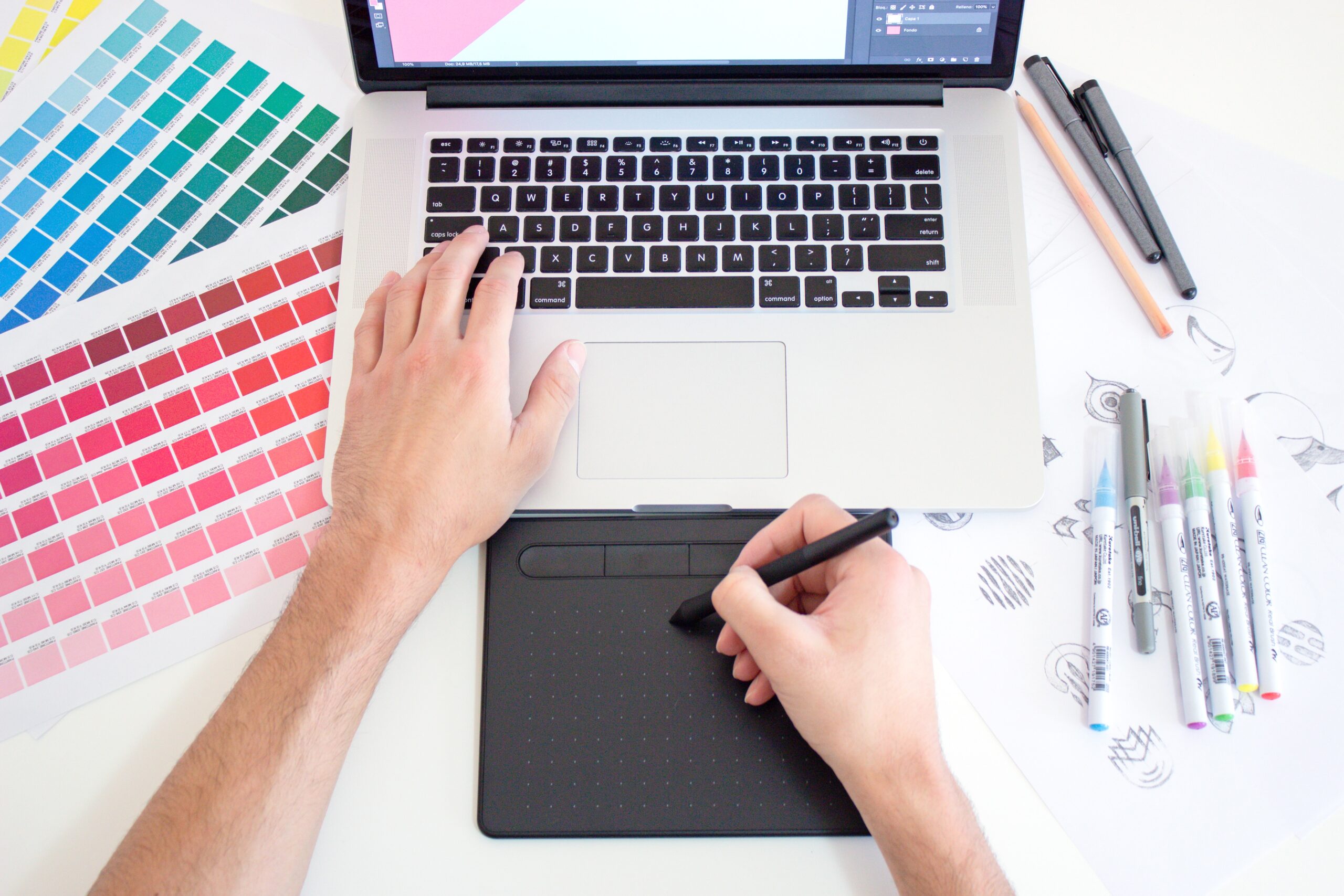
Are you considering listing your art on a POD (Print on Demand) website? Here are some things you should know.
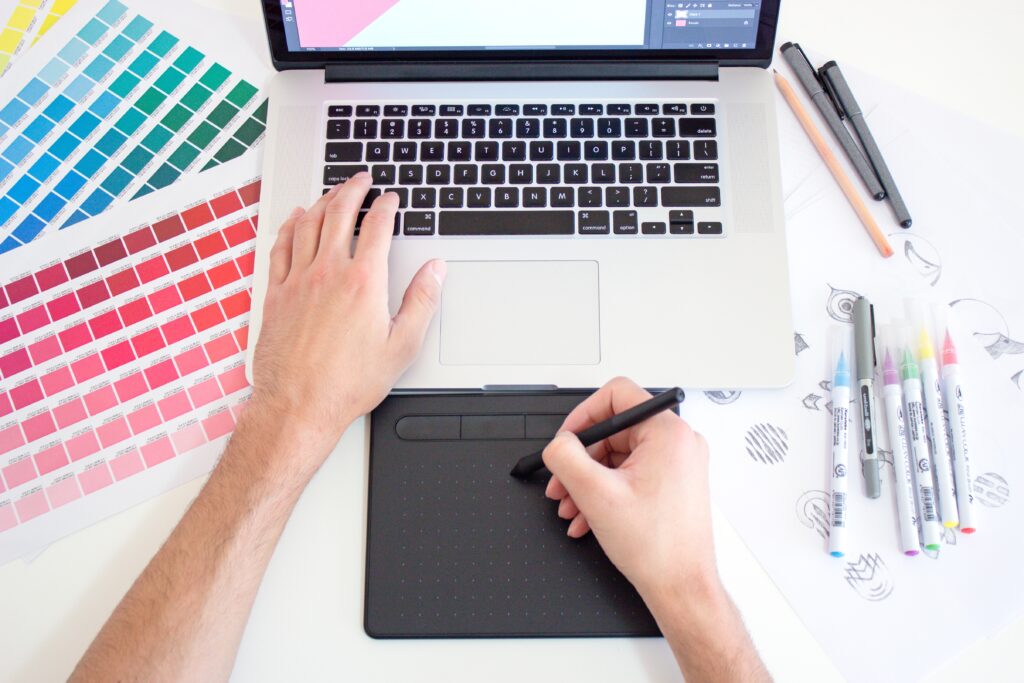
Print on Demand Textiles
Textile manufacturers worldwide are investing in digital technology. This is causing a shift in the way Surface Pattern Designers create and license their work, and the opportunities in the industry are changing. Currently the two main textile printing techniques are Rotary Screen Printing and Digital Textile Printing. Other methods like flat bed screen printing and direct to film printing are also used but are not as cost-effective. Steps in textile printing are being automated for smaller and more energy-efficient processes. Single pass digital printers are becoming smaller and smarter and are matching the speed of rotary screen printing. Digitally printed products have no minimums, allowing for personalization, while remaining profitable for manufacturers. It is clear that digital technologies are the future of the industry.
The Growth of Print on Demand Manufacturing
In 2022 the global print on demand market was valued at $5.397 billion. It’s projected to reach $39.035 billion by 2031. That’s a compound annual growth rate of approximately 26.2%. There is a growing demand for personalized one-of-a-kind products with 36% of consumers expecting some form of personalization. Many Surface Pattern Designers are adding POD listings to their art licensing businesses, or side-stepping the licensing process all-together.
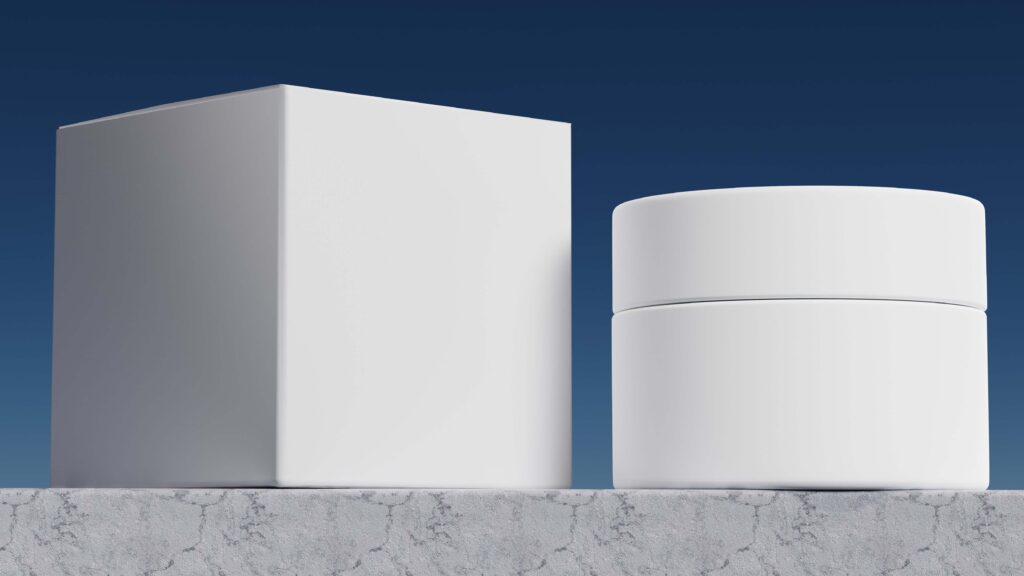
Commission Based POD vs White Label POD
The main difference between Commission Based POD websites and White Label or Drop Shipping POD formats lies in the level of involvement and responsibilities for the artist. In Commission Based POD, the platform takes care of various aspects such as promotion, sales, production, packaging, shipping, customer service, and returns. Artists simply upload their work, and the platform handles the rest. On the other hand, with White Label POD, artists are responsible for listing and selling products through their own website, promoting the products, and managing customer service. The POD manufacturer takes care of production, packaging, and shipping, with the possibility of adding the artist’s branding information to the packaging.
Things to Consider before you list your designs on a POD Website
- Quality
- Image protection and attribution
- Commission Structure, payment schedules and taxes
- Artist Listing, Proofing or Membership Fees
- Listing Limitations
- Uploading Details: File formats and dimensions
- Affiliate Link programs
- Manufacturing processes (ethics, sustainability)
- Personal Information & Identity Theft
QUALITY
While working on a custom duvet cover for a client I was comparing options between very similar products on Spoonflower and Society 6. The determining factor had to do with how much of the duvet cover would be printed. The Society 6 option was single-sided, so if the cover was folded over you would see lots of plain white fabric. This would’ve been a deal breaker for the customer. The duvet cover from Spoonflower was printed on both sides, and that’s the product we decided on. Familiarizing yourself with this kind of detail takes a lot of time, but can be very useful in deciding where to upload your designs. It’s especially helpful if you can be clear with customers why you’ve chosen one product over another.
Print quality and product quality vary greatly among POD sites. And each product may have special considerations. One of the best ways to determine the quality of a particular product is to order samples, but when listing hundreds or thousands of products, it is not very economical. Here are some other ways to vet quality
- purchase samples
- join designer facebook groups associated with the POD and ask other designers about product/printing quality
- read product reviews from customers, and take note of any repeating issues
- pay attention if customers contact you directly with complaints about a product
IMAGE PROTECTION AND ATTRIBUTION
When Utah-based ‘Raspberry Creek Fabrics’ opened their Designer Studios to commission based sales, many designers were eager to join in. Early in the process we realized that it was relatively straightforward to right click on the full design tiles and copy them from the website. Word of the potential design file protection issues spread quickly through the design community, with many designers choosing not to list their work until the files were watermarked or blurred.
In situations like this I would recommend communicating your concerns directly to the POD company in question, to make sure that you are getting the most accurate information possible. When I asked co-owner Justin Rammell for a summary of what the issue was, and how Raspberry Creek Fabrics resolved it this was his reply:
‘We had a system in place that watermarked images appearing on the site. Yet, we found that in the checkout window, customers could click the image and download full resolution images without the watermark. The full resolution images were never displayed on the product pages. The issue was discovered because a customer posted about some fabrics she ordered and included the images. She was just excited about her order. A designer noticed they were full resolution. There was no theft of images by another printer or group to our knowledge.
Now, all images reside on a separate server. We provide a low res version to Shopify. The original image is never available on Shopify.’
Design theft is a real concern for artists who publish their work online. Some POD sites have better image security than others.
Things to look for:
- can you right click and save pattern images from the website
- are pattern tile thumbnails in a full tile repeat or cropped
- is there a watermark on the design image
- are designs blurred in previews, or is the image very sharp
Many artist’s small businesses thrive on word of mouth and visibility on social media. Having your work correctly attributed is very important. This goes beyond recognition, and crosses over into issues of copyright.
Things to look for:
- Are designer’s names visible wherever the products are listed?
- Are attributions linked back to the artist’s shop pages, design collections or profiles?
- Does this website routinely include artist’s names in their marketing of designs?
Commission Structure, Payment Schedules and Taxes
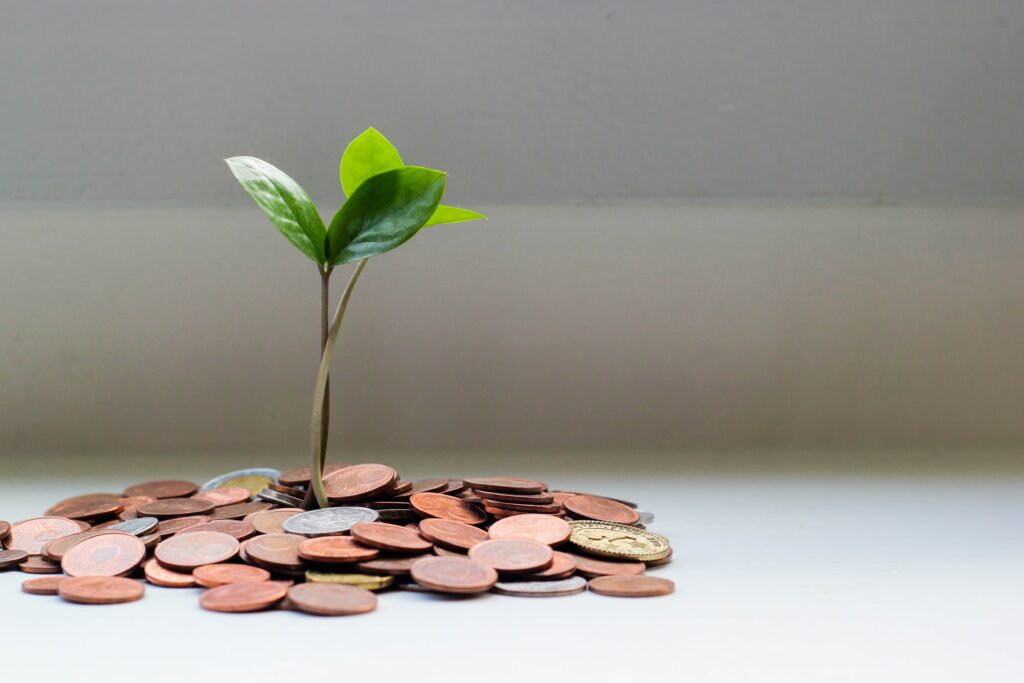
Manufacturing Processes – Ethics and Sustainability
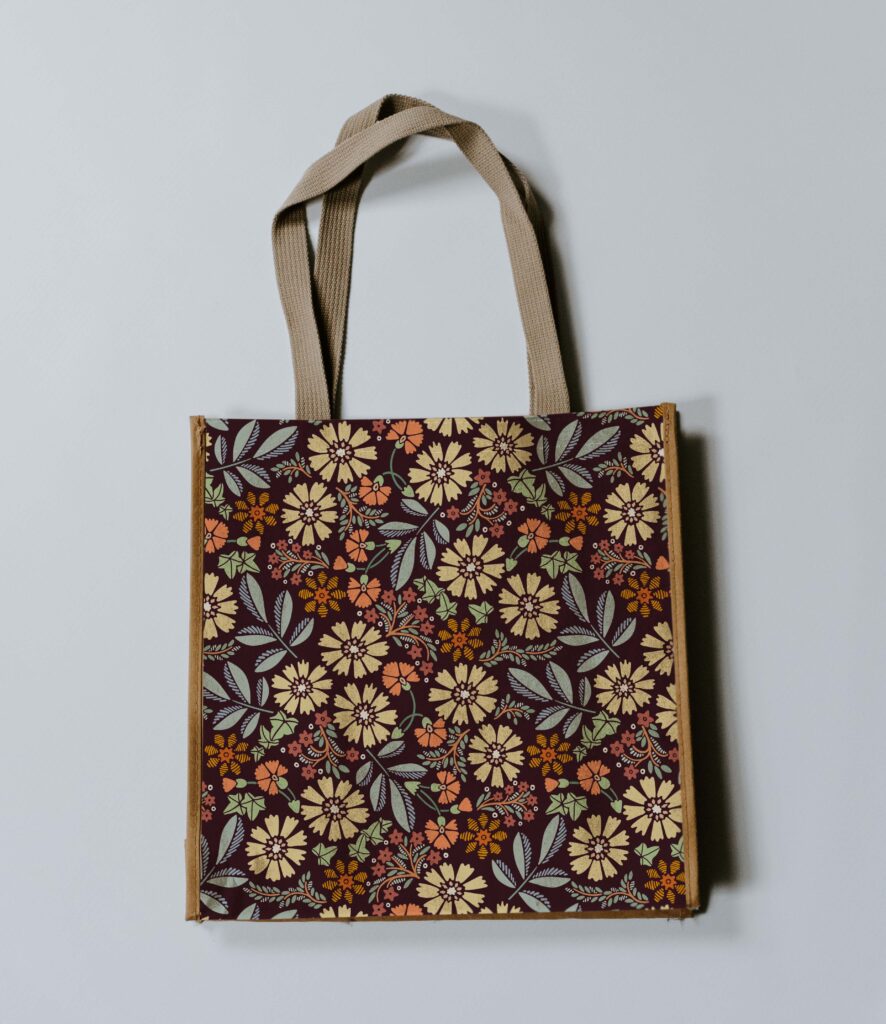
Commission Based POD Manufacturers Key Details
SPOONFLOWER / SHUTTERFLY
PRODUCTS: fabric, home décor & wallpaper
ARTIST COMMISSIONS:
- 10% commission with up to an additional 5% bonus commission based on sales
- sales and bulk discounts do not affect your commissions
- home goods commissions are paid by yardage of printed fabric, not the cost of the finished item
- Spoonflower provides artists with annual tax forms, and they handle the sales tax on products
- pay out every 2 weeks, with a minimum of $10
FEES:
- no listing fee
- no subscription fee, they do offer a pro membership
- artists pay for proofs. The least expensive proofs, when you factor in shipping, are about $0.70 to $1 per design by making F.A.Y. on Petal Signature Cotton.
DESIGNER DISCOUNTS: 10%
PRODUCT LISTING: unlimited listings
UPLOAD DETAILS:
- Artists set the scale of the design, each different scale requires a separate upload
- Artists can choose to make designs available for sale as fabric, wallpaper or both
- Bulk uploading up to 8 designs
- Bulk tagging
AFFILIATE LINKS: exclusively for ambassadors or partners
IMAGE PROTECTION AND ATTRIBUTION: excellent
GENERAL IMPRESSIONS
- relatively efficient uploading and tagging
- good site security
- responsive customer service
- artists are featured on the website and on social media
- payments happen on time, and are accurate
SOCIETY 6
PRODUCTS: wall art, home decor, bed&bath, apparel, furniture, bags & accessories, office, tech, outdoor
ARTISTS COMMISSIONS:
- 10% commission on most products, artists set commissions on fine art prints
- pay out monthly
FEES:
- $1 verification fee to open a shop
- shipping fees are deducted from artist commissions
- no proofs are required
DESIGNER DISCOUNTS: purchase your own products at the base price
AFFILIATE LINKS: 10%
ZAZZLE
www.zazzle.ca
PRODUCTS: Stationary, Apparel, Home Décor, Bath and Beauty, Car Accessories, Electronics, Art, Gifts, Weddings
ie example custom luggage tags with a picture of the bride and groom for a destination wedding
ARTIST COMISSIONS: set your own commission rates between 5% and 90% (higher than 15% royalty -zazzle charges a transaction fee) Payments occur when you hit $50 in commissions.
FEE: no listing fee, no proofs required
AFFILIATE LINKS: 15%
RED BUBBLE & Tee Public
www.redbubble.com
PRODUCTS: Apparel, stickers, phone cases, wall art, Home & Living, kids & babies
ARTISTS COMISSIONS:
- Set your own comission rates – default is 20%
- sales and bulk pricing affect your comissions.
- read through how Redbubble taxes different goods in Canada
- do not provide artists with tax forms and you are responsible for tracking and reporting sales taxes on the products you sell [this is a bit of a black box for me, let me know if you figure out what this entails]
FEES: Recently introduced a tier system – artists have to pay a subscription fee to list designs
AFFILIATE LINKS: up to 10%
RASPBERRY CREEK FABRICS
www.raspberrycreekfabrics.com
PRODUCTS: Fabric & Wallpaper (mostly apparel fabrics)
ARTIST COMISSIONS: 10% of sales, affected by sale prices
- paid monthly
- montly sales competitions
FEES: no fees, no paid proofing. Artists visually proof designs before making them available for sale, and then are responsible to pay the cost of the item if there is a design flaw, such as a line through the repeat
AFFILIATE LINKS: 10%
AMAZON MERCH ON DEMAND
**YOU HAVE TO RE-PUBLISH EACH PRODUCT DAILY
PRODUCTS: Apparel, Pop Sockets Grips, Phone Cases, Throw Pillows, Tote Bags,
COMMISSIONS: Vary depending on the country for example a T-shirt in the US approx. 10%
fees: no fees
PRODUCT LISTINGS:
done by tier you start with 10 products – manually reviewed if you have sold 10 of the 10 products you’ve created to move up to the 25 tier
Tier levels: 10, 25, 100, 500 – also based on the quality of the products being sold
designs are reviewed and approved
Designs that do not sell within a year are removed
THREADLESS
**customizable shop pages
PRODUCTS: T-shirts, Apparel, Home Decor, Accessories
Commissions: Set your own prices
Fees: Free
ArtStoreFronts, Zenfolio, and Fotomoto
PRINT ON DEMAND WEBSITES SUITABLE FOR DROP SHIPPING or SELLING ON ETSY
What is Drop Shipping and how does it work
1) a customer buys a product from your online store
2) your online store automatically sends the order to a POD site
3) they fill the order and ship it to your customer
Things to be aware of for DROP SHIPPING
- shipping times
- branding with shipping labels, stickers or postcards in the packaging
- start up costs
- ETSY listing fees, transaction fees and processing fees (witholding payment for 3 months)
- cost of mock ups
- printify premium fees
- customer service
- cost of returns / return policies
- check on integrations (compatibility with your website/drop shipping site)
- time it takes to list, and re-doing listings for price changes
- White label
ART OF WHERE
www.artofwhere.com
** Silk fabrics
PRODUCTS: apparel, pillows, scarves, wall art, accessories, bags, fabric, stationary
-ships from Canada and the US
*customized packaging
- integration to shopify, etsy, squarespace & Big Cartel
PRINTIFY
www.printify.com
**a printing platform connecting to mulitple printing manufacturers
- 800+ products
- used for drop shipping
- You have to monitor if a company runs out of stock and replace them manually, or you can have automatic order routing (can be problematic for bulk orders, as an order can be split between manufacturers and arrive in separate deliveries, causing customer confusion)
- you have to monitor quality, as some printing manufacturers are inconsistent
- options for automatic order approval or manual order approval
- design scaling is set manually on each product ie. Monster digital big scaling difference between small and large, print size stays the same on any size larger than large
- stock issues in 4th quarter
- manually set base colors
FEES: printify premium fees $25 per month
Taxes: Track your own taxes, sales taxes etc.
CUSTOM CAT
SPOD
TPOP
JETPRINT – niche products like Shoes, yoga accessories
SHIRTEE.CLOUD
PRINTFUL
GELATO
- European
- focuses on ethical manufacturing processes
PRODUCTS: eco friendly and organic options
limited selection of products - print at locations closer to where the customer places the order
SELLFY
*smaller community
PRODUCTS: digital products and print on demand products
streaming videos, ebooks, audio & music
- digital subscription products
FEES: Monthly fee
GOOTEN
PRODUCTS: Wall Art, Mugs
*transparency about printing processes
B2B –
ARTSCOW
HUGEPOD
PRINTBEST
PRINT ON DEMAND WEBSITES the FINE PRINT
- read content guidelines
- understand fees and commission structures
- take note of file sizes and DPI minimums and maximums
- can you say you are donating proceeds to charity
- how are taxes handled
- do they advertise
Photo credits: Kelly Sikkema, Theme Photos, Mohamed Nohassi on Unsplash
Be the first to comment